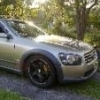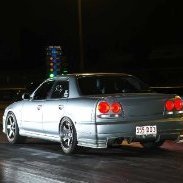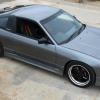Intercooler pipes - aluminum vs stainless
Announcements
-
Similar Content
-
Latest Posts
-
Tighten until it starts to get loose again, then back off 1/4 turn?
-
By robbo_rb180 · Posted
Do them as you'll find when you remove them they are perished/dried. Its probably one of the best things to do as makes the car so much more responsive. Do ball joints while there too. -
Hi All Got an R33, about 114,000km on the clock. Handles very nice, no signs of issues. Engine is out and i'm doing an underbody refresh, mainly painting subframe, cosmetics etc. Can't see anything physically giving play, but I'm wondering which bushes are the ones that wear the most, or the first ones that may give problems down the track? For good measure I'm thinking to fit new ones. Thanks
-
This post has OUTER tie rod torque spec - what about INNER tie rod torque spec??? Cannot find this info ANYWHERE.
-








Recommended Posts
Create an account or sign in to comment
You need to be a member in order to leave a comment
Create an account
Sign up for a new account in our community. It's easy!
Register a new accountSign in
Already have an account? Sign in here.
Sign In Now